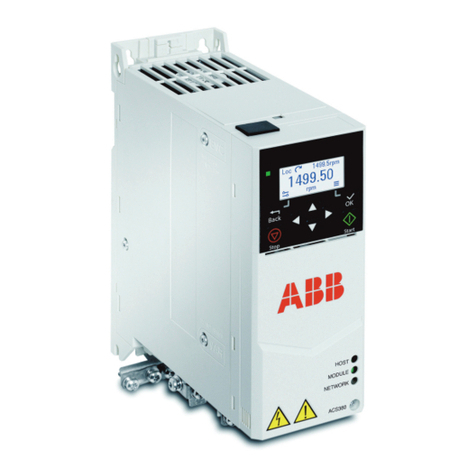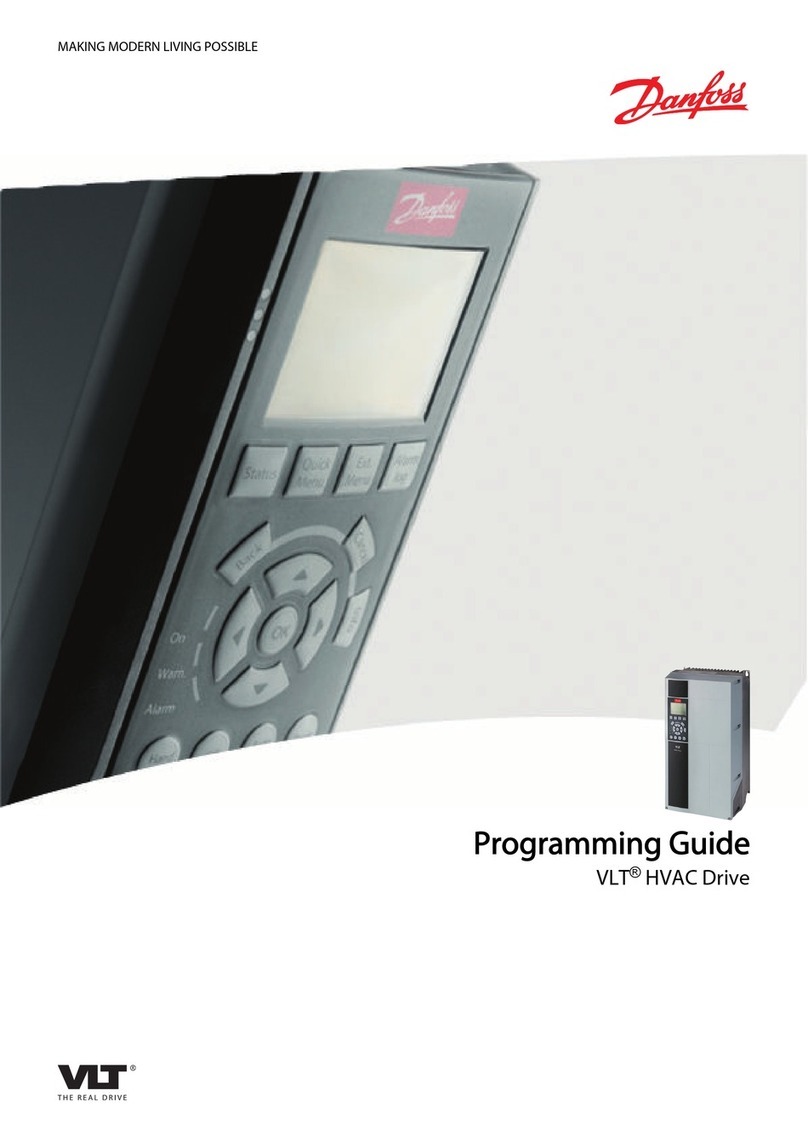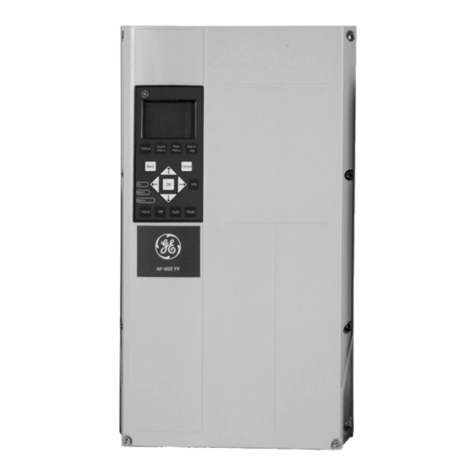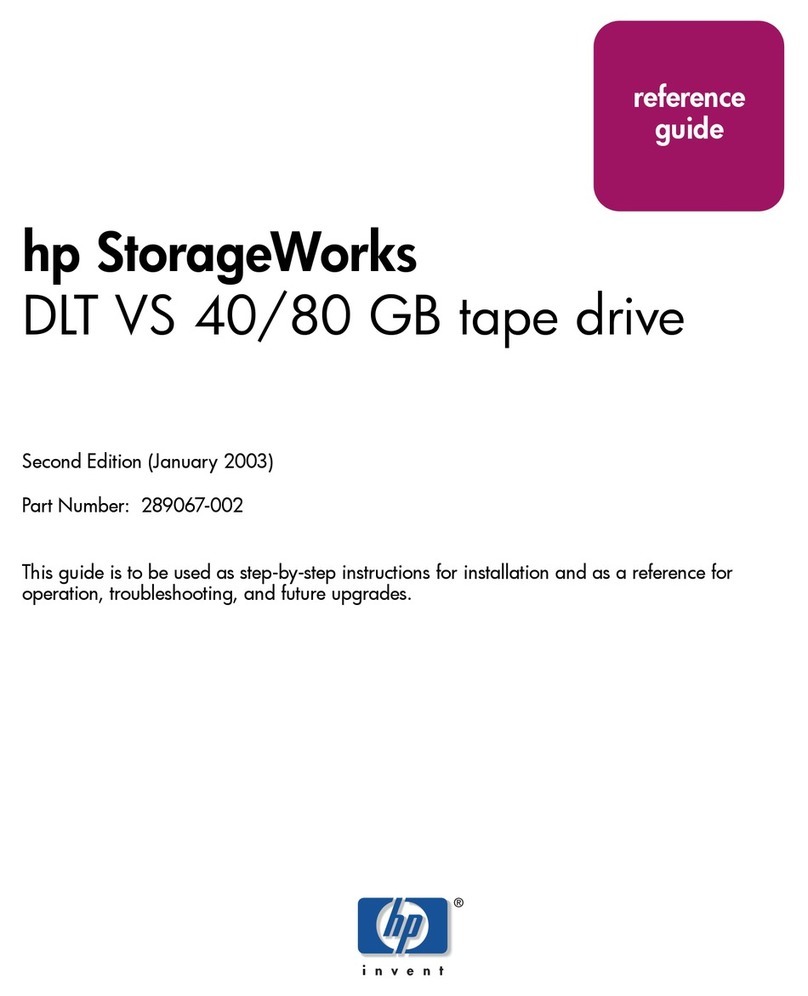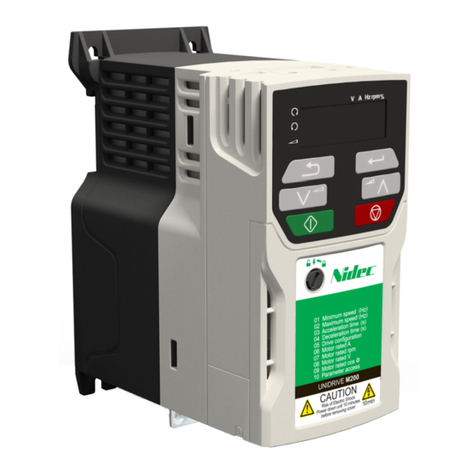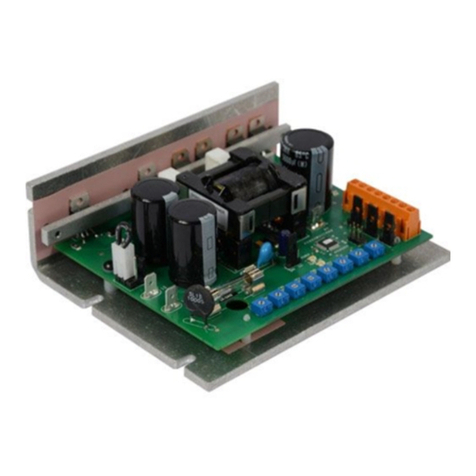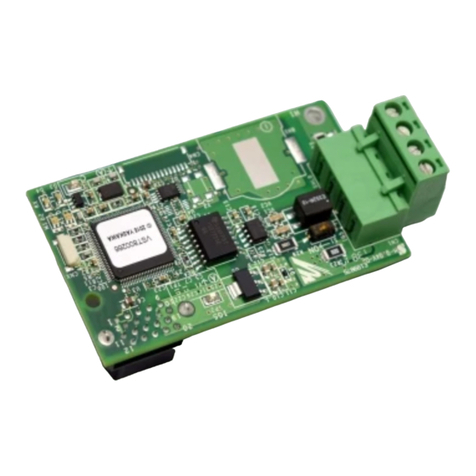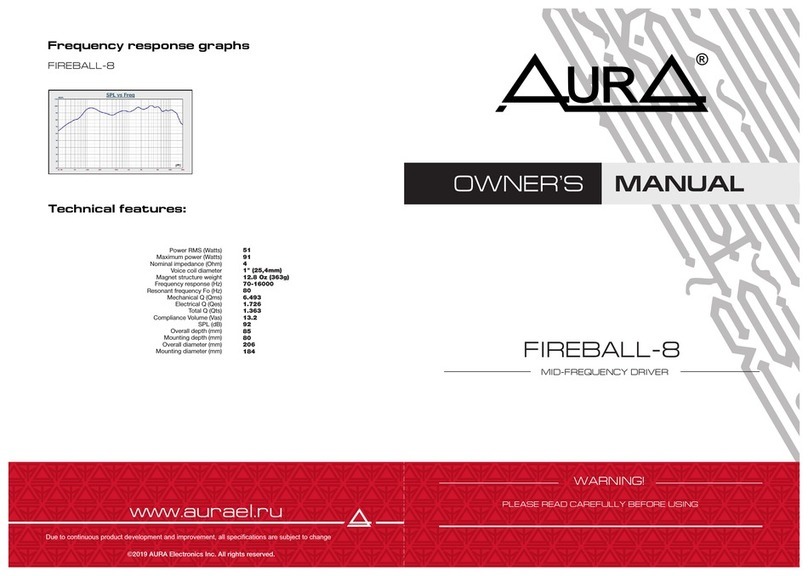Fuji Electric FRENIC-AQUA series User manual

MEHT538b

User's Manual

Copyright © 2012 Fuji Electric Co., Ltd.
All rights reserved.
No part of this publication may be reproduced or copied without prior written permission from Fuji Electric
Co., Ltd.
All products and company names mentioned in this manual are trademarks or registered trademarks of their
respective holders.
The information contained herein is subject to change without prior notice for improvement.

i
Preface
This manual provides all the information on the FRENIC-AQUA series of inverters including its operating
procedure, operation modes, and selection of peripheral equipment. Carefully read this manual for proper use.
Incorrect handling of the inverter may prevent the inverter and/or related equipment from operating correctly,
shorten their lives, or cause problems.
The table below lists the other materials related to the use of the FRENIC-AQUA. Read them in conjunction
with this manual as necessary.
Name Material No. Description
Catalog MEH601
Product scope, features, specifications, external
drawings, and options of the product
Instruction Manual INR-SI47-1611-E
Acceptance inspection, mounting & wiring of the
inverter, operation using the keypad, running the motor
for a test, troubleshooting, and maintenance and
inspection
RS-485
Communication
User's Manual
24A7-E-0021*
Overview of functions implemented by using
FRENIC-AQUA RS-485 communications facility, its
communications specifications, Modbus RTU/Fuji
general-purpose inverter protocol and functions, and
related data formats
*Available soon
The materials are subject to change without notice. Be sure to obtain the latest editions for use.
The latest editions can be downloaded from our Web side at:
http://www.fe-frontrunners.eu/inverter/en/index1.htm

ii
Safety precautions
Read this manual and the FRENIC-AQUA Instruction Manual (that comes with the product) thoroughly
before proceeding with installation, connections (wiring), operation, or maintenance and inspection. Ensure
you have sound knowledge of the product and familiarize yourself with all safety information and
precautions before proceeding to operate the inverter.
Safety precautions are classified into the following two categories in this manual.
Failure to heed the information indicated by this symbol may lead to
dangerous conditions, possibly resulting in death or serious bodily injuries.
Failure to heed the information indicated by this symbol may lead to
dangerous conditions, possibly resulting in minor or light bodily injuries
and/or substantial property damage.
Failure to heed the information contained under the CAUTION title can also result in serious consequences.
These safety precautions are of utmost importance and must be observed at all times.
This product is not designed for use in appliances and machinery on which lives depend. Consult your Fuji
Electric representative before considering the FRENIC-AQUA series of inverters for equipment and
machinery related to nuclear power control, aerospace uses, medical uses or transportation. When the
product is to be used with any machinery or equipment on which lives depend or with machinery or
equipment which could cause serious loss or damage should this product malfunction or fail, ensure that
appropriate safety devices and/or equipment are installed.

iii
How this manual is organized
This manual contains Chapters 1 through 11 and Appendices.
Chapter 1 ABOUT FRENIC-AQUA
This chapter describes the features and control system of the FRENIC-AQUA series and the recommended
configuration for the inverter and peripheral equipment.
Chapter 2 SPECIFICATIONS
This chapter describes specifications of the output ratings, control system, and terminal functions for the
FRENIC-AQUA series of inverters. It also provides descriptions of the operating and storage environment,
product warranty, precautions for use, external dimensions, examples of basic connection diagrams, and
details of the protective functions.
Chapter 3 SELECTING OPTIMAL MOTOR AND INVERTER CAPACITIES
This chapter provides you with information about the inverter output torque characteristics, selection
procedure, and equations for calculating capacities to help you select optimal motor and inverter models.
Chapter 4 SELECTING PERIPHERAL EQUIPMENT
This chapter describes how to use a range of peripheral equipment and options, FRENIC-AQUA's
configuration with them, and requirements and precautions for selecting wires and crimp terminals.
Chapter 5 PREPARATION AND TEST RUN
This chapter details the operating environment, storage environment, installation, wiring, basic connection
examples, names and functions of the keypad components, operation using the keypad, and test run
procedure.
Chapter 6 FUNCTION CODES
This chapter contains overview tables of 12 groups of function codes available for the FRENIC-AQUA series
of inverters, function code index by purpose, and details of function codes.
Chapter 7 BLOCK DIAGRAMS FOR CONTROL LOGIC
This chapter provides the main block diagrams for the control logic of the FRENIC-AQUA series of
inverters.
Chapter 8 RUNNING THROUGH RS-485 COMMUNICATION
This chapter describes an overview of inverter operation through the RS-485 communications facility. Refer
to the RS-485 Communication User's Manual for details.
Chapter 9 TROUBLESHOOTING
This chapter describes troubleshooting procedures to be followed when the inverter malfunctions or detects
an alarm or a light alarm condition. In this chapter, first check whether any alarm code or the "light alarm"
indication (L-AL) is displayed or not, and then proceed to the troubleshooting items.
Chapter 10 MAINTENANCE AND INSPECTION
This chapter provides the instructions on how to perform daily and periodic inspections in order to avoid
trouble and keep reliable operation of the inverter for a long time.

iv
Chapter 11 CONFORMITY WITH STANDARDS
This chapter sets forth the conformity with overseas standards.
Appendices
Icons
The following icons are used throughout this manual.
This icon indicates information which, if not heeded, can result in the inverter not operating to
full efficiency, as well as information concerning incorrect operations and settings which can
result in accidents.
This icon indicates information that can prove handy when performing certain settings o
r
operations.
This icon indicates a reference to more detailed information.

v
CONTENTS
Chapter 1 ABOUT FRENIC-AQUA
1.1 Features..................................................................................................................................................... 1-1
1.2 Inspection of goods and product appearance .......................................................................................... 1-14
1.2.1 Inspection of goods ........................................................................................................................... 1-14
1.2.2 Product appearance ........................................................................................................................... 1-16
Chapter 2 SPECIFICATIONS
2.1 Standard Model......................................................................................................................................... 2-1
2.1.1 FRENIC-AQUA.................................................................................................................................. 2-1
2.2 Common Specifications............................................................................................................................ 2-4
2.3 Terminal Specifications .......................................................................................................................... 2-10
2.3.1 Terminal functions ............................................................................................................................ 2-10
2.3.2 Setting up the slide switches ............................................................................................................. 2-20
2.3.3 Screw specifications and recommended wire sizes...........................................................................2-22
2.3.3.1 Main circuit terminals ............................................................................................................... 2-22
2.3.3.2 Control circuit terminals (Common to all inverter types) ......................................................... 2-29
2.4 Cable Glands or Conduits ....................................................................................................................... 2-30
2.4.1 Cable glands...................................................................................................................................... 2-30
2.4.2 Conduits ............................................................................................................................................ 2-34
2.5 Leakage Current of the EMC Filter ........................................................................................................ 2-37
2.6 Derating of Rated Output Current........................................................................................................... 2-39
2.7 Operating Environment and Storage Environment ................................................................................. 2-40
2.7.1 Operating environment...................................................................................................................... 2-40
2.7.2 Storage environment ......................................................................................................................... 2-41
2.7.2.1 Temporary storage..................................................................................................................... 2-41
2.7.2.2 Long-term storage ..................................................................................................................... 2-41
2.8 Precautions for Using Inverters .............................................................................................................. 2-42
2.8.1 Precautions in introducing inverters.................................................................................................. 2-42
2.8.2 Precautions in running inverters........................................................................................................ 2-46
2.8.3 Precautions in using special motors .................................................................................................. 2-46
2.9 External Dimensions............................................................................................................................... 2-47
2.9.1 Standard models ................................................................................................................................ 2-47
2.9.2 Keypad .............................................................................................................................................. 2-53
2.10 Connection Diagrams ............................................................................................................................. 2-54
Chapter 3 SELECTING OPTIMAL MOTOR AND INVERTER CAPACITIES
3.1 Selecting Motors and Inverters ................................................................................................................. 3-1
3.1.1 Motor output torque characteristics..................................................................................................... 3-1
3.1.2 Selection procedure............................................................................................................................. 3-3
3.1.3 Equations for selections ...................................................................................................................... 3-6
3.1.3.1 Load torque during constant speed running ................................................................................ 3-6
3.1.3.2 Calculation of acceleration/deceleration time ............................................................................. 3-7
3.1.3.3 Heat energy calculation of braking resistor............................................................................... 3-10
Chapter 4 SELECTING Peripheral EQUIPMENT
4.1 Configuring the FRENIC-AQUA ............................................................................................................. 4-1
4.2 Selecting Wire Size................................................................................................................................... 4-2
4.2.1 Currents flowing across the inverter terminals.................................................................................... 4-2
4.2.2 Recommended wires ........................................................................................................................... 4-3
4.3 Peripheral Equipment ............................................................................................................................... 4-5
4.3.1 Molded case circuit breaker (MCCB), residual-current-operated protective device (RCD)/
earth leakage circuit breaker (ELCB) and magnetic contactor (MC).................................................. 4-5
4.3.2 Surge killers for L-load ....................................................................................................................... 4-8

vi
4.3.3 Arresters.............................................................................................................................................. 4-9
4.3.4 Surge absorbers ................................................................................................................................. 4-10
4.4 Options.................................................................................................................................................... 4-11
4.4.1 Selecting peripheral equipment options ............................................................................................ 4-11
4.4.1.1 Power regenerative PWM converters, RHC series.................................................................... 4-11
4.4.1.2 AC reactors (ACRs) .................................................................................................................. 4-31
4.4.1.3 DC reactors (DCRs) (Built-in or bundled as standard) ............................................................. 4-35
4.4.1.4 Surge suppression unit (SSU).................................................................................................... 4-37
4.4.1.5 Output circuit filters (OFLs)...................................................................................................... 4-38
4.4.1.6 Zero-phase reactors for reducing radio noise (ACLs) ............................................................... 4-41
4.4.2 Selecting options for operation and communication .........................................................................4-42
4.4.2.1 External frequency command potentiometer............................................................................. 4-42
4.4.2.2 Extension cable for remote operation........................................................................................ 4-43
4.4.2.3 Frequency meters ...................................................................................................................... 4-43
4.4.2.4 Inverter support loader software (Available soon) .................................................................... 4-44
4.4.3 Selecting Option Cards ..................................................................................................................... 4-45
4.4.3.1 List of option cards, connection ports, and applicable ROM versions ...................................... 4-45
4.4.3.2 Relay output interface card (OPC-RY)...................................................................................... 4-46
4.4.3.3 Relay output interface card (OPC-RY2).................................................................................... 4-48
4.4.3.4 Analog interface card (OPC-AIO)............................................................................................. 4-50
4.4.3.5 Analog current output (2 ch) interface card (OPC-AO) ............................................................ 4-54
4.4.3.6 Resistance temperature detectors input card (OPC-PT) (Available soon)................................. 4-55
4.4.3.7 CC-Link communications card (OPC-CCL) ............................................................................. 4-56
4.4.3.8 PROFIBUS-DP communications card (OPC-PDP2) ................................................................ 4-58
4.4.3.9 DeviceNet communications card (OPC-DEV).......................................................................... 4-61
4.4.3.10 CANopen communications card (OPC-COP) ........................................................................... 4-64
4.4.3.11 LONWORKS communications card (OPC-LNW) (Available soon) ........................................ 4-66
4.4.3.12 Ethernet communications card (OPC-ETH) (Available soon) .................................................. 4-66
4.5 Backup Battery ....................................................................................................................................... 4-67
4.5.1 Outline............................................................................................................................................... 4-67
4.5.2 Loading the battery ........................................................................................................................... 4-68
4.5.2.1 Battery loading procedure ......................................................................................................... 4-68
4.5.3 Battery replacement procedure.......................................................................................................... 4-70
4.5.4 About air transport of batteries.......................................................................................................... 4-70
Chapter 5 PREPARATION AND TEST RUN
5.1 Mounting and Wiring the Inverter ............................................................................................................ 5-1
5.1.1 Installing the inverter .......................................................................................................................... 5-1
5.1.2 Wiring ................................................................................................................................................. 5-2
5.1.2.1 Removing and mounting the front cover and the wiring plate .................................................... 5-2
5.1.3 Screw specifications and recommended wire sizes............................................................................. 5-4
5.1.3.1 Main circuit terminals ................................................................................................................. 5-4
5.1.3.2 Control circuit terminals (Common to all inverter types) ........................................................... 5-4
5.1.4 Cable glands or conduits ..................................................................................................................... 5-4
5.1.5 Wiring precautions .............................................................................................................................. 5-5
5.1.6 Wiring of main circuit terminals and grounding terminals ................................................................. 5-6
5.1.7 Wiring for control circuit terminals..................................................................................................... 5-9
5.1.8 Setting up the slide switches ............................................................................................................. 5-12
5.1.9 USB port ........................................................................................................................................... 5-13
5.2 Mounting and Connecting a Keypad ...................................................................................................... 5-14
5.2.1 Parts required for connection ............................................................................................................ 5-14
5.2.2 Mounting procedure.......................................................................................................................... 5-14
5.3 Operation Using the Keypad................................................................................................................... 5-17
5.3.1 LCD monitor, keys and LED indicators on the keypad..................................................................... 5-17
5.4 Overview of Operation Modes ............................................................................................................... 5-21
5.5 Running Mode ........................................................................................................................................ 5-22
5.5.1 Monitoring the running status ........................................................................................................... 5-22

vii
5.5.2 Setting up frequency and PID commands ......................................................................................... 5-25
5.5.3 Running/stopping the motor.............................................................................................................. 5-29
5.5.4 Remote and local modes ................................................................................................................... 5-29
5.5.5 Changing from keypad operation to external signal (terminal block) operation............................... 5-30
5.5.6 Monitoring light alarms..................................................................................................................... 5-30
5.6 Programming Mode ................................................................................................................................ 5-31
5.6.1 Quick Setup....................................................................................................................................... 5-33
5.6.2 Start-up.............................................................................................................................................. 5-33
5.6.2.1 Set Display Language................................................................................................................ 5-34
5.6.2.2 Function-Specific Initialization................................................................................................. 5-35
5.6.2.3 Date/Time Settings.................................................................................................................... 5-35
5.6.2.4 Set Display ................................................................................................................................ 5-38
5.6.3 Function Codes ................................................................................................................................. 5-39
5.6.3.1 Setting up function codes .......................................................................................................... 5-40
5.6.3.2 Confirm Data............................................................................................................................. 5-42
5.6.3.3 Confirm Changed Function Code.............................................................................................. 5-42
5.6.3.4 Copying data ............................................................................................................................. 5-42
5.6.3.5 Set Timer Operation .................................................................................................................. 5-54
5.6.3.6 Initialize Data ............................................................................................................................ 5-57
5.6.4 Inverter Information .......................................................................................................................... 5-58
5.6.4.1 Confirm Power Level ................................................................................................................ 5-58
5.6.4.2 Confirm Operational Status....................................................................................................... 5-59
5.6.4.3 Check Status of Input/Output Signal......................................................................................... 5-62
5.6.4.4 View Maintenance Information................................................................................................. 5-64
5.6.4.5 View Unit Information .............................................................................................................. 5-68
5.6.5 Alarm Information ............................................................................................................................ 5-69
5.6.5.1 Confirm Alarm History ............................................................................................................. 5-69
5.6.5.2 Confirm Light Alarm History.................................................................................................... 5-73
5.6.5.3 Retry History............................................................................................................................. 5-73
5.6.6 User Config ....................................................................................................................................... 5-74
5.6.6.1 Quick Setup............................................................................................................................... 5-74
5.6.6.2 Password ................................................................................................................................... 5-74
5.6.7 Tools.................................................................................................................................................. 5-78
5.6.7.1 Monitor PID Control Status ...................................................................................................... 5-78
5.6.7.2 Monitor Multiple Unit Controls ................................................................................................ 5-81
5.6.7.3 Monitor Customized Logic (CLogic)........................................................................................ 5-84
5.6.7.4 Resonance Avoidance................................................................................................................ 5-85
5.6.7.5 Load Factor Measurement......................................................................................................... 5-86
5.6.7.6 Communication Debug ............................................................................................................. 5-89
5.7 Alarm Mode............................................................................................................................................ 5-90
5.7.1 Releasing the alarm and switching to Running mode ....................................................................... 5-90
5.7.2 Displaying the alarm history ............................................................................................................. 5-90
5.7.3 Displaying the status of inverter at the time of alarm ....................................................................... 5-90
5.7.4 Test run procedure............................................................................................................................. 5-91
5.7.5 Checking prior to powering ON........................................................................................................ 5-92
5.7.6 Powering ON and checking............................................................................................................... 5-93
5.7.7 Selecting a desired motor drive control............................................................................................. 5-93
5.7.8 Function code basic settings < 1 > .................................................................................................... 5-94
5.7.9 Function code basic settings and tuning < 2 > .................................................................................. 5-95
5.7.10 Running the inverter for motor operation check ............................................................................... 5-97
5.7.11 Preparation for practical operation.................................................................................................... 5-98
Chapter 6 FUNCTION CODES
6.1 Overview of Function Codes .................................................................................................................... 6-1
6.2 Function Code Tables ............................................................................................................................... 6-2
6.3 Details of Function Codes....................................................................................................................... 6-44
6.3.1 F codes (Fundamental functions) ...................................................................................................... 6-44

viii
6.3.2 E codes (Extension terminal functions)............................................................................................. 6-86
6.3.3 C codes (Control functions) ............................................................................................................ 6-130
6.3.4 P codes (Motor 1 parameters) ......................................................................................................... 6-142
6.3.5 H codes (High performance functions) ........................................................................................... 6-146
6.3.6 H1 codes (High performance functions) ......................................................................................... 6-189
6.3.7 J codes (Application functions 1).................................................................................................... 6-196
6.3.8 J1 codes (PID control 1).................................................................................................................. 6-197
6.3.9 J2 codes (PID control 2).................................................................................................................. 6-237
6.3.10 J4 codes (Pump APP functions) ...................................................................................................... 6-239
6.3.11 J5 codes (External PID control 1) ................................................................................................... 6-279
6.3.12 J6 codes (External PID control 2, 3) ............................................................................................... 6-303
6.3.13 d codes (Application functions 2) ................................................................................................... 6-307
6.3.14 U codes (Customizable logic functions) ......................................................................................... 6-308
6.3.15 U1 codes (Customizable logic functions) ....................................................................................... 6-329
6.3.16 y codes (Link functions).................................................................................................................. 6-334
6.3.17 T codes (Timer functions) ............................................................................................................... 6-339
6.3.18 K codes (Keypad functions)............................................................................................................ 6-343
Chapter 7 BLOCK DIAGRAMS FOR CONTROL LOGIC
7.1 Symbols Used in Block Diagrams and their Meanings ............................................................................ 7-1
7.2 Frequency Command Block ..................................................................................................................... 7-2
7.3 Drive Command Block ............................................................................................................................. 7-4
7.4 V/f Control Block ..................................................................................................................................... 7-5
7.5 PID Process Control Block....................................................................................................................... 7-7
7.6 External PID Process Control Block......................................................................................................... 7-9
7.7 FM1/FM2 Output Selector...................................................................................................................... 7-11
Chapter 8 RUNNING THROUGH RS-485 COMMUNICATION
8.1 Overview on RS-485 Communication...................................................................................................... 8-1
8.1.1 RS-485 common specifications........................................................................................................... 8-2
8.1.2 Terminal specifications for RS-485 communication ........................................................................... 8-3
8.1.3 Connection method ............................................................................................................................. 8-4
8.1.4 Communications support devices........................................................................................................ 8-6
8.1.5 Noise suppression................................................................................................................................ 8-7
8.2 Overview of FRENIC Loader................................................................................................................... 8-8
8.2.1 Specifications ...................................................................................................................................... 8-8
8.2.2 USB port on the inverter unit .............................................................................................................. 8-9
Chapter 9 TROUBLESHOOTING
9.1 Protective Functions ................................................................................................................................. 9-1
9.2 Before Proceeding with Troubleshooting ................................................................................................. 9-2
9.3 If an Alarm Code Appears on the Monitor................................................................................................ 9-3
9.3.1 Alarm Codes ....................................................................................................................................... 9-3
9.3.2 If the "Light Alarm" Indication Appears ........................................................................................... 9-21
9.4 Nothing appears on the monitor.............................................................................................................. 9-23
9.4.1 Abnormal motor operation................................................................................................................ 9-23
9.4.2 Problems with inverter settings ......................................................................................................... 9-30
9.5 If Other than an Alarm Code is Displayed.............................................................................................. 9-32
Chapter 10 MAINTENANCE AND INSPECTION
10.1 Daily Inspection...................................................................................................................................... 10-1
10.2 Periodic Inspection ................................................................................................................................. 10-1
10.3 List of Periodic Replacement Parts......................................................................................................... 10-3
10.3.1 Judgment on service life.................................................................................................................... 10-4
10.4 Measurement of Electrical Amounts in Main Circuit ............................................................................. 10-8
10.5 Insulation Test......................................................................................................................................... 10-9

ix
10.6 Cooling Fan Replacement Procedure.................................................................................................... 10-10
Chapter 11 CONFORMITY WITH STANDARDS
11.1 Compliance with European Standards .................................................................................................... 11-1
11.1.1 Conformity to the Low Voltage Directive in the EU......................................................................... 11-2
11.1.2 Compliance with EMC Standards ..................................................................................................... 11-5
11.1.2.1 General ...................................................................................................................................... 11-5
11.1.2.2 Recommended installation procedure ....................................................................................... 11-5
11.1.2.3 Leakage current of the EMC filter............................................................................................. 11-7
11.1.3 Harmonic Component Regulation in the EU .................................................................................... 11-9
11.1.3.1 General ...................................................................................................................................... 11-9
11.1.3.2 Compliance with IEC/EN 61000-3-2 ........................................................................................ 11-9
11.1.3.3 Compliance with IEC/EN 61000-3-12 ...................................................................................... 11-9
11.2 Conformity with UL Standards and CSA Standards (cUL-listed for Canada) (Under application)...... 11-10
11.2.1 General............................................................................................................................................ 11-10
11.2.2 Conformity with UL standards and CSA standards (cUL-listed for Canada) ................................. 11-10
Appendices
App. A Advantageous Use of Inverters (Notes on electrical noise)................................................................... A-1
A.1 Effect of inverters on other devices ....................................................................................................... A-1
A.2 Noise...................................................................................................................................................... A-2
A.3 Noise prevention.................................................................................................................................... A-4
App. B Effect on Insulation of General-purpose Motors Driven with 400 V Class Inverters.......................... A-12
B.1 Generating mechanism of surge voltages ............................................................................................ A-12
B.2 Effect of surge voltages ....................................................................................................................... A-13
B.3 Countermeasures against surge voltages ............................................................................................. A-13
B.4 Regarding existing equipment ............................................................................................................. A-14
App. C Inverter Generating Loss ..................................................................................................................... A-15


Chapter 1
About FRENIC-AQUA
This chapter describes the features, control system, outer appearance and recommended configuration of
peripheral equipment for FRENIC-AQUA.
Contents
1.1 Features...................................................................................................................................................... 1-1
1.2 Inspection of goods and product appearance ........................................................................................... 1-14
1.2.1 Inspection of goods......................................................................................................................... 1-14
1.2.2 Product appearance ......................................................................................................................... 1-16


1.1 Features
1-1
Chap. 1
A
bout FRENIC-AQUA
1.1 Features
Overview
FRENIC-AQUA is Fuji Electric’s first “slim-type inverter specially designed for saving energy.”
The device is ideal for all kinds of applications related to systems for supplying water and treating
wastewater.
FRENIC-AQUA reduces electric power consumption and significantly contributes to cost reduction!
zWide capacity range
· 0.75 kW to 710 kW / 400V
zProtective structure
(IP standards)
· IP21 / IP55 (max. 90 kW)
· IP00 (min. 110 kW)
zEquipped with DC reactor (DCR) / EMC filter
90 kW or below 110 kW or above
DCR Built-in Externally mounted
EMC
Filter
Built-in
IEC/EN 61800-3
Immunity/2nd env.
Emission/Category C2
Built-in
IEC/EN 61800-3
Immunity/2nd env.
Emission/Category C3
DCR:IEC/EN 61000-3-2, IEC/EN 61000-3-12
Equipped with optimal functions for water-treatment system
●Slow flow rate function ●Cascade control
●Dry pump detection ●4PID control
●Acceleration and deceleration at initial stage ●Mutual operation
●Boost function ●Fire Mode (forced operation)
●Deceleration time for check valve protection ●Pick-up operation function
●End of curve detection ●Customizable logic
●Control of maximum starts per hour ●Regenerative avoidance control
●Anti-jam ●Real time clock
●Automatic energy-saving operation
●Overload avoidance control
●Commercial operation switching
●Command loss detection
●Low torque detection
●Password function
●Torque vector control
System protection function
Water supply / drainage system function
Control panel not
required for IP55
Applicable to
large-scale systems
Externally mounted
filter not required
Harmonic current control

1-2
System protection function
zSlow flow rate function
The inverter can be stopped when the discharge rate becomes low due to increase of pump
discharge pressure. Facility having a bladder tank can make the stoppage period longer by
applying pressure immediately before stoppage, which realizes energy-saving operation.
zDry pump detection
Pump dry condition can be detected from PID deviation value by setting the output frequency,
output current, and flow rate sensor value. Water leakage and pressure drop due to impeller
damage can be detected as well. You can choose whether the inverter will stop operation by alarm
or continue to operate while outputting alarm.
zAcceleration and deceleration at initial stage
When a pump such as a deep well pump is operated at low speed over a long period of time, the
pump may be damaged since the load current is large in the low-speed range. It is possible to
provide acceleration/deceleration time specific to the low-speed range in order to avoid prolonged
operation.
Small water
volume
Pressurized operation
Past
Frequency
Stop time increases, thereby maximizing energy savings.
Small water
volume
Initial
deceleration time

1.1 Features
1-3
Chap. 1
A
bout FRENIC-AQUA
zBoost function
You can set operation frequency, operation time, acceleration time at startup to enable optimal
operation for pump startup.
· Pressurized operation can be executed for a fixed amount of time at startup.
zDeceleration time for check valve protection
If rapidly decelerated, the system valves close quickly, and check valves (piping, pump, valves)
may be damaged by water hammering. To protect the check valve from this, the pump speed is
gradually slowed down when the check valve closes.
zEnd of curve detection
You can detect large water volume operation status due to incorrect pump capacity selection
(assumed maximum flow required for water supply) from output frequency, output current, flow rate
sensor value and PID deviation.
You can choose whether the inverter will stop operation by alarm or continue to operate while
outputting alarm.
zControl of maximum starts per hour
Detects if start / slow flow rate stop occurs frequently due to failure of the accumulator, etc. You
can choose whether the inverter will stop operation by alarm or continue to operate while
outputting alarm.
zAnti-jam
If sand or dust were caught in the impeller with a submerged pump and over current protection
function is activated, the motor is rotated in reverse at restart so that the sand and dust are ejected
from the impeller. Then, the motor resumes rotation in forward, allowing water to be supplied in a
normal manner

1-4
Water supply / drainage system function
zCascade control
The cascade control is the function that controls the multiple pumps by one inverter. The pumps
are controlled with combination of inverter drive and commercial drive. This can be applied in a
large-scale water treatment plant.
In cascade control, the signals of flow rate and pressure sensors are controlled by the PID
regulator that is built in the inverter. Each pump is driven either by the inverter or commercially
according to the switching signal from the inverter. The pumps are controlled only by the inverter
when the discharge volume is small, and adding to the inverter drive, they are controlled using
commercial drive by adding them one by one as the discharge volume gets larger in order to
ensure the required discharge volume in total. There are two following methods in control: inverter
drive motor fixed method and inverter drive motor fixed method.
· Inverter drive motor fixed method (FIXED)
The system is configured by combining the motor driven by the inverter (M0), motors that are
commercially driven (M1 to M8) and auxiliary motor (MA). The motor driven by the inverter is
always fixed as motor M0. Motors commercially driven are added one by one in control when the
required discharge flow rate cannot be achieved with the motor M0 only.
· Inverter drive motor floating method (FLOATING)
The system for this method is configured by combining the motors that can be switched between
inverter drive and commercial drive (M1 to M4) and auxiliary motor that are commercially driven
(MA). The motors are driven by the inverter with variable speed control at start. When the desired
discharge flow rate cannot be achieved with the first motor, operations FLOATING-1 or
FLOATING-2 can be selected.
FLOATING-1 (inverter-driven motor ⇒increasing motor)
The first motor: Switched as a commercially driven motor
Second and subsequent motors: Operated by inverter drive
The inverter-driven motor is changed by rotation as the motor is added.
FLOATING-2 (inverter-driven motor ⇒changes to the next-numbered motor following slow flow rate
stop)
The first motor: Inverter drive continued
Second and subsequent motors: Commercially driven
Inverter drive motor fixed method (FIXED)
Max. 1 unit + 8 units + 1 unit
(Driven by inverter) (Commercially driven) (Auxiliary motor)
Inverter drive motor floating method (FLOATING)
Max. 4 units + 1 unit
(Auxiliary motor)
* When using optional relay output card (OPC-RY2)

1.1 Features
1-5
Chap. 1
A
bout FRENIC-AQUA
z4PID control (standardly equipped with 4PID)
· 4PID control (for process)
Can be used by switching 2 types of process commands and feedback value. “Slow flow rate
stop function, dry pump detection, control of maximum starts per hour, end of curve detection,
filter clogging / anti-jam, deviation alarm / absolute value alarm output” have been added to PID
regulator that conducts temperature, pressure or flow rate control, etc. An anti-reset wind-up
function to prevent PIF control overshoot and PID control function that can be easily adjusted by
PID limiter or integral fold / reset signal are furthermore employed.
PID control (process) block diagram
· External PID control (process)
Equipped with 3 built-in external PID controllers. You can independently control external
actuators such as dampers and valves. An externally mounted PID controller is no longer
required, thereby enabling cost reduction.
External PID control (process) block diagram
PID1 PV
演算器
+
-
PID1 SV
+
-
フィードバック
選択
偏差
最大選択
最小選択
PID制御2/1切換
PID
調節器
アン チリセットワイ ン ドアップ
積分ホールド
積分・微分リセット
速度指令
選択
渇水保護
少水量停止機能
大水量保護
高頻度運転保護
フィルタ目詰まり/噛み込み防止
正動作/
逆動作
PID制御
キャンセル
周波数指令
PID2 PV
PID2 SV
プ ロ セス指令値
フィード バック値
プロセス指令値
SV:Set Value PV:Process Value
フィー ド バック値
PID1 PV
+
-
PID1 SV
偏差
最大選択
最小選択
プロセス指令値
フィー ドバック値
SV:Set Value
PV:Process Value
PID
調節器
正動作/
逆動作
演算器
速度指令
選択 PID制御
キャン セル
外部PID1出力
積分・微分リセット
積分ホールド
アン チリセットワ イ ン ドアップ
+
-
フィー ドバック
選択
PID2 PV
PID2 SV プロセス指令値
PID
調節器
速度指令
選択 PID制御
キャンセル
外部PID2出力
正動作/
逆動作
積分・微分リセット
積分ホールド
アン チリセットワイ ン ドアップ
+
-
フィー ドバック
選択
PID3 PV
PID3 SV
プロセス指令値
PID
調節器
正動作/
逆動作
PID制御
キャンセル
外部PID3出力
積分・微分リセット
積分ホールド
アン チリセットワ イ ン ドアップ
速度指令
選択
External PID output
· Y1-Y4 pins
⇒Pulse output
· FM1/FM2 pins
⇒Analog output
Feedback value
Computing
unit
Process command
value
Feedback
selection
Process command value
Integral hold
Integral/differential reset
A
nti-reset wind-up
Integral hold
Integral/differential reset
A
nti-reset wind-up
Integral hold
Integral/differential reset
A
nti-reset wind-up
Speed
command
selection
PID
regulator
Forward/
reverse
Deviation
Max. selection
Min. selection
External PID1 output
PID control 1
cancel
Feedback
selection
PID control 2
cancel
PID control 3
cancel
Speed
command
selection
Forward/
reverse
Forward/
reverse
External PID1 output
External PID1 output
PID
regulator
PID
regulator
SV: Set Value
PV: Process Value
Process command value
Speed
command
selection
PID1 SV
Speed
command
selection
PID1 PV
PID2 SV
Computing
unit
Process command value
Feedback
selection
Process
command value
Feedback value
Feedback value
PID control 2/1 switching
Deviation
Max. selection
Min. selection
PID control
cancel
Frequency
command
PID
regulator
Forward/
reverse
Integral hold
Integral/differential reset
A
nti-reset wind-up
Filter clogging / anti-jam
Dry pump
detection
Slow flow rate
stop function
End of curve
detection
Control of maximum
starts per hour
SV: Set Value PV: Process Value
PID2 PV
Other manuals for FRENIC-AQUA series
1
Table of contents
Other Fuji Electric DC Drive manuals

Fuji Electric
Fuji Electric Frenic lift User manual

Fuji Electric
Fuji Electric Frenic lift How to use

Fuji Electric
Fuji Electric FRENIC-Eco Series User manual

Fuji Electric
Fuji Electric frenic-hvac User manual

Fuji Electric
Fuji Electric frenic-hvac User manual

Fuji Electric
Fuji Electric FRENIC-Lift LM2A Series User manual
Popular DC Drive manuals by other brands

GFA
GFA ELEKTROMAT SI 45.15-40,00 GA45/15GD installation instructions
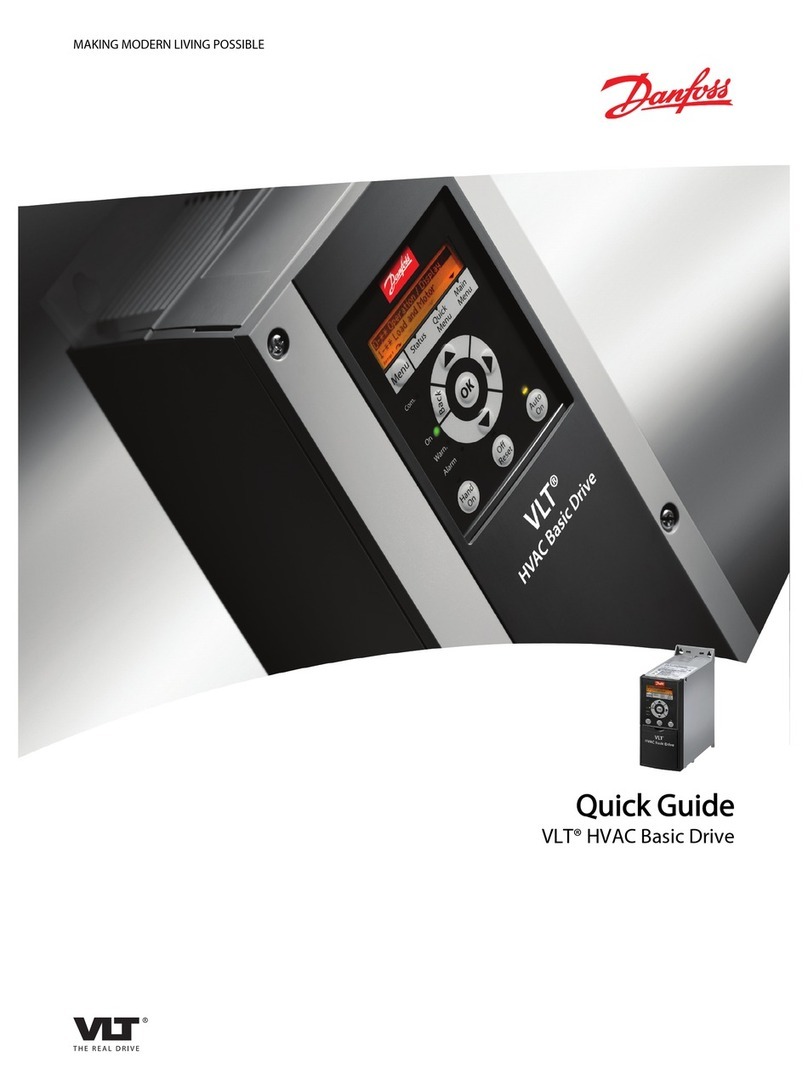
Danfoss
Danfoss VLT HVAC Basic Drive FC 101 quick guide
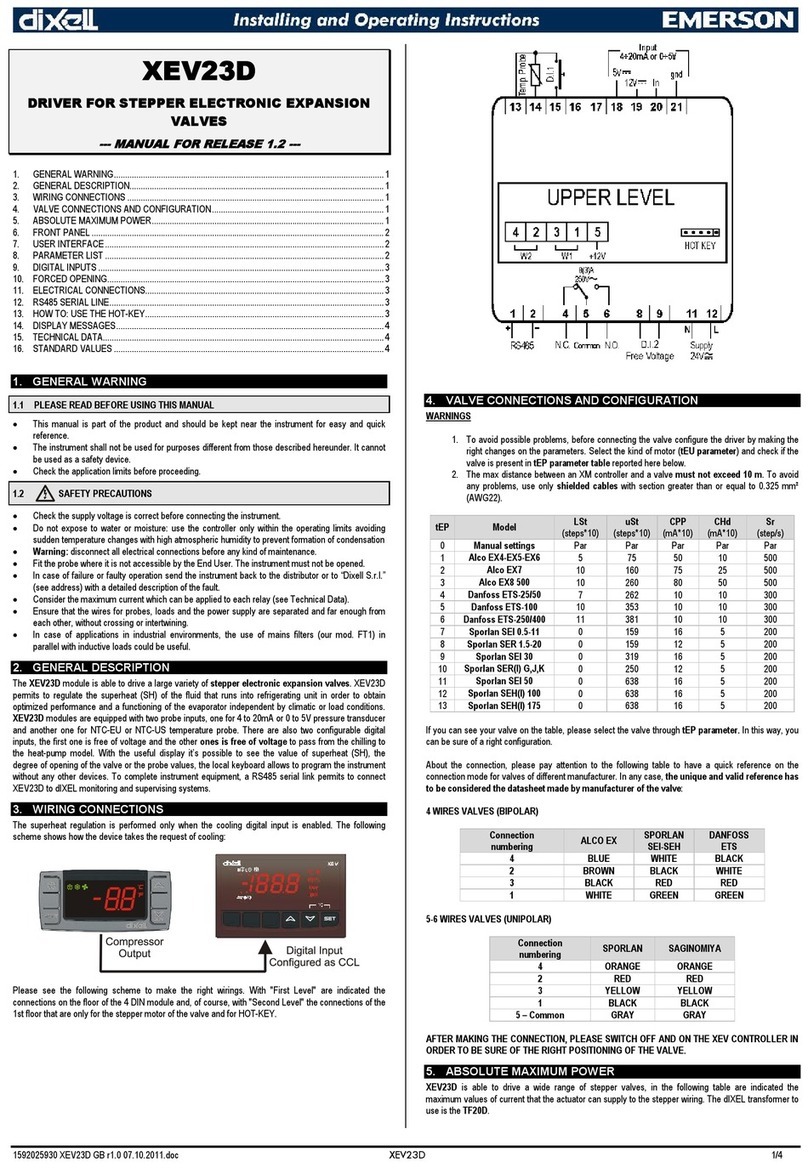
Emerson
Emerson Dixell XEV23D Installing and operating instructions

IBM
IBM OPTIONS Zip 100MB IDE user guide
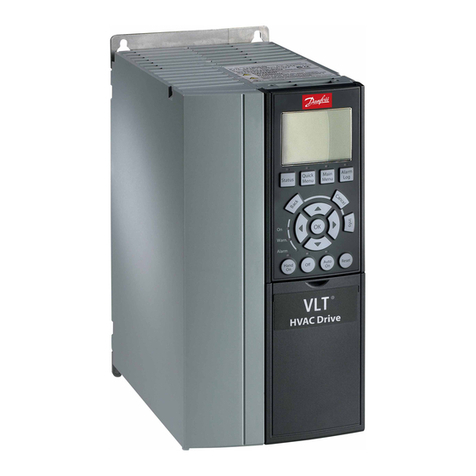
Danfoss
Danfoss VLT MCB 115 installation guide
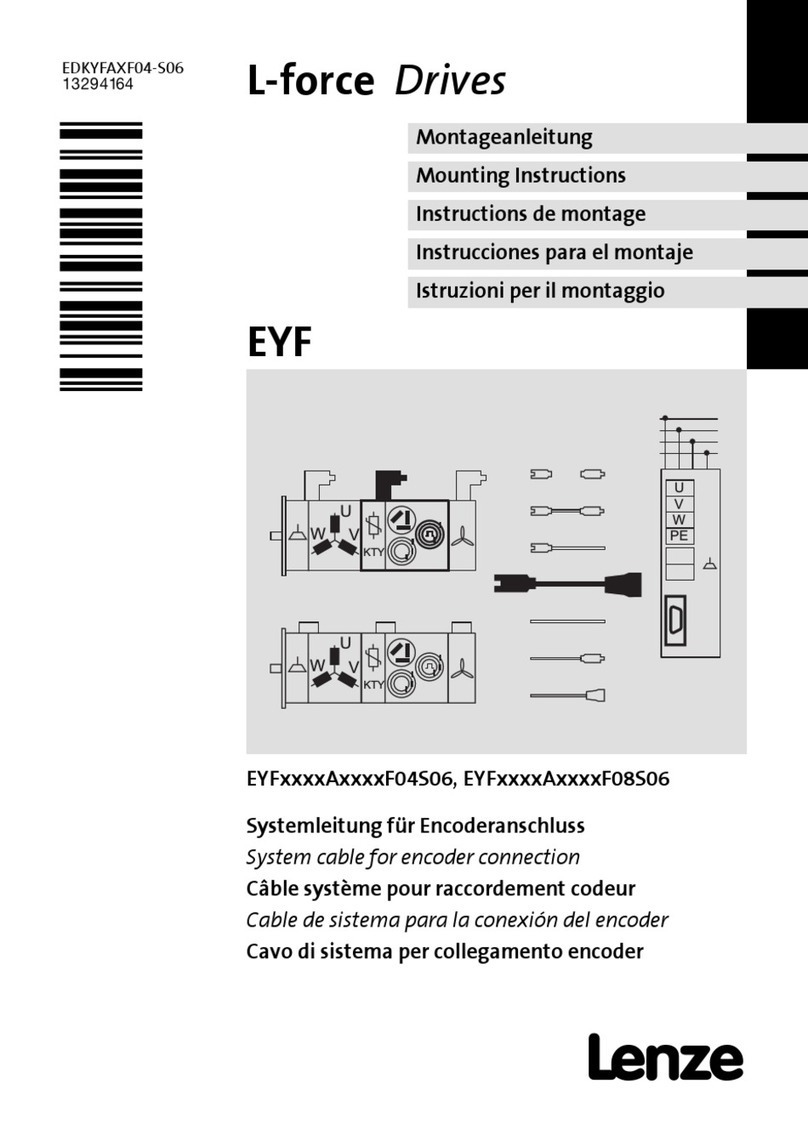
Lenze
Lenze L-force EYF A F04S06 Series Mounting instructions
